A few months back Frank Sherwin, “Senior Science Lecturer” at the Institute for Creation Research, launched an amusing attack on evolution that is nigh on word-salad; this time focusing on insects, and how they are supposedly problematic for evolutionary theory.
As usual it is stated with the confidence and the faux authority that is typical of “creation science” practitioners but when you actually look at it and try to make sense of what is being said it quickly becomes apparent that much of it is really unintelligible nonsense.
Sherwin: The phylum Arthropoda is composed of creatures that have paired, jointed appendages and a chitinous (nitrogen-containing polysaccharide) exoskeleton. It is the largest group of animals in God’s creation and includes the crustaceans (lobsters, crabs) and insects.
And shrimp, spiders, scorpions, horseshoe crabs, centipedes, millipedes, isopods, barnacles, ostracods, etc. etc., plus extinct groups like trilobites and sea scorpions etc.. To give you a general idea of arthropod diversity, here is a phylogram —based on molecular data— showing the relationships the various extant arthropod sub-groups (and a few outgroups at the bottom, tardigrades & onychophorans):
Again, this illustration just scratches the surface as it includes only living types and only shows one representative species for what are in several cases immensely diverse groups of organisms. Most especially the insects, which conservatively includes 3 or 4 million species (some estimates go as high as 80 million) with only 1 million currently having been scientifically described.
In fact, well over half of all living animal species are made up of one sub-group of insects, the holometabolous insects—insects that undergo complete metamorphosis during there embryonic development—with arthropods in general making up more that three quarters of all animal species.
To graphically illustrate this point here is a pie chart comparing the relative numbers of the animal species within different groups. The four major Orders of holometabolous insects are in dark-green, while the other insects are in middle-green and the remaining arthropod types in light-green. All other animal types are in white.

“Relative proportions of the animal groups of the animal species numbers presently known (modified after Wilson, 1992).” (Modified from Schminke, 2007)
So yes, arthropods are a very, very, large group and you would probably want to avoid generalizing from one or two examples of relative stasis within a few lineages but I’m getting ahead of things now.
Sherwin: Arthropods, like all other creatures, validate the creation model by appearing suddenly and completely in the fossil record in a most un-Darwinian manner.
The above sentence is a real conversation stopper. Not the “un-Darwinian” part, the “suddenly and completely” in relation to arthropods part. What could it possibly mean to say that such a hugely diverse group of organisms appears “suddenly and completely” in the fossil record? I think anyone with even the most basic understanding of arthropod diversity and the nature of the fossil record will have a tough time wrapping their brains around Sherwin’s statement and making any sense of it.
Sherwin does give a reference here (#1) which is to an earlier article that was also about insects and evolution, in particular butterflies. Here is what seems to be the relevant portion:
Butterflies are insects, of course, belonging to the class Insecta. They, in turn, belong to a much larger group of animals called the arthropods. What was the origin of this very substantial phylum? Three authors recently concluded the following:
As Darwin noted in the Origin of Species, the abrupt emergence of arthropods in the fossil record during the Cambrian presents a problem for evolutionary biology. There are no obvious simpler or intermediate forms—either living or in the fossil record—that show convincingly how modern arthropods evolved from worm-like ancestors. Consequently there has been a wealth of speculation and contention about relationships between the arthropod lineages.1
Butterfly “evolution” is usually discussed in terms of disruptive selection and mimicry, both of which count as but minor variation among these stunning creatures. Clearly, they remain butterflies. What of the origin of insect wings? (Sherwin, 2005, p. 5) [Side note: the quote Sherwin gives above is from an article regarding the evolution of the arthropod nervous system (Osorio, et al, 1997).]
This is not particularly helpful for understanding his statement. Without our getting diverted into problems with this earlier article, he talks about butterflies being insects and that insects are arthropods, which is all well and good but then sidetracks into this quote about the appearance of arthropods in the Cambrian, arthropod origins and the relationships between different types of arthropods only to then switch to talking about the origin of insect wings.
I can see how he would try and use this out of context quote (from a non-paleontologist) to support a claim that representatives of the Phylum Arthropoda first appear, “suddenly”, in the Cambrian Period, however there is nothing in the quote either about insects—the supposed subject of both of these Sherwin’s articles—or about arthropods appearing “completely”, whatever that is supposed to mean.
Side note: While it is true that there was a flowering of arthropods (and other groups) in the Cambrian Period, there are some potential basal arthropods going back to the Precambrian.
The reason I am belaboring this point is because insects, which again, are the ostensible focus of Sherwin’s article, don’t appear in the fossil record until the Mid-Devonian Period, about 100 million years after the Cambrian! And the same is true of lobsters and crabs (decapod crustaceans) which Sherwin also mentions specifically (though non-decapod crustaceans are known from the Cambrian).
What possible sense can be made of Sherwin’s talking about arthropods appearing “completely” when insects, which make up the vast majority of arthropod species, don’t even appear in the fossil record for more than 100 million years after the first, non-insect, arthropods?
This would be like saying that tetrapods (four legged land animals) appeared “suddenly and completely” in the Devonian even though there were no “reptiles”, birds or mammals, until later in the fossil record. Do a few basal forms of amphibians, which are known from the Devonian, represent a “complete” sampling of all tetrapods?
Nor does the Flood geology theology that Mr. Sherwin’s ministry favors render his statement about arthropods appearing in the fossil record “completely” any more intelligible. Worse it adds on the problem that there is no obvious reason that a year long global flood should order arthropod fossils in the way that they are found in the fossil record (more on that in a moment).
Now that’s a big glaringly obvious problem with his statement and it doesn’t get any better for Mr. Sherwin whether we broaden our view to look at the other Classes of arthropods or stay within Class Insecta.
The following are spindle diagrams illustrating the increases and decreases in Family level diversity within the various arthropods Classes throughout the Phanerozoic fossil record (modified from Valentine, 1995, pp.12-13 & 17). The wider the spindle in the diagram, the higher the number of Families at the geological time period indicated at the top & bottom of the diagram.

 As you can see the various arthropod Classes do not appear in the fossil record at the same time. Likewise their Family level diversity is far from constant; with some Classes maintaining a fairly constant level of diversity and others fluctuating dramatically.
As you can see the various arthropod Classes do not appear in the fossil record at the same time. Likewise their Family level diversity is far from constant; with some Classes maintaining a fairly constant level of diversity and others fluctuating dramatically.
Looking just at Class Insecta we can see, for example, that there was a dramatic increase in Familial diversity in the Permian and an equally dramatically decreased in the great Permian-Triassic extinction event. Though the increase in insect Family diversity during the Permian was nothing compared to the explosion of diversity that occurred during the Cenozoic (though some of this may be due to preservational bias).
Here is another spindle diagram, this time focusing on just the various insect Orders showing the changes in Familial diversity from the Mid-Devonian period to the present:

“Spindle diagram showing changes in diversities of Families within various insect Orders through geologic time since the Palaeozoic (Pz). Mz, Mesozoic; Cz, Caenozoic. Scale bar in lower right (modified after Labandeira and Sepkoski, 1993).” Source: (Schminke, 2007)
Once again you can see, just like other arthropod groups, insect Orders do not appear in the fossil record at the same time and that the number of Families within these Orders changes considerably through time.
Now let’s further restricting ourselves to just the four largest Orders of insects—the holometabolous insects— that, as we’ve seen, represent more than half of all animals species.
Of the holometabolous insects the first to appear in the fossil record are the beetles, with fossils assignable to Coleoptera making an appearance in the Mid-Carboniferous, around 310 m.y.a.. And beetles make up about 40% of all insect species.
Fossils assignable to the other big three don’t make an appearance until the Mesozoic:
- Beetles (Coleoptera): first appearance Middle Carboniferous (310 m.y.a.)
- Flies (Diptera) : first appearance of “true” dipterans, Middle Triassic
- Wasps & Bees (Hymenoptera): first appearance Triassic, however social hymenopterans do not appear until the Cretaceous.
- Butterflies & Moths (Lepidoptera): first appearance Latest Triassic, however the first lepidopterans with familiar coiled proboscis do not appear until the Middle Jurassic.
So we have one hundred million years of arthropod species coming and going before the first insects—the largest of all animal groups—shows up and around 78 million years of insect species coming and going before anything we would call a beetle—the largest group of insects—makes an appearance.
Clearly, contrary to what Mr. Sherwin is implying, arthropods do not appear in the fossil record all at once. Rather, there is a definite pattern of appearance and disappearance of various sub-groups throughout geologic time. But all this must be ignored in order to somehow rationalize Mr. Sherwin’s statement that arthropods appear “suddenly and completely” in the fossil record.
Sherwin: A recent discovery of a fossil in Brazil has frustrated evolutionists by being a 100-percent cricket that “has undergone very little evolutionary change since the Early Cretaceous Period.”
Once again we have a creationist using a common name and folk taxonomy to build a purely semantic argument against evolution.
What could it possibly mean to be “100-percent cricket” when “cricket” is a common name given to pretty much a whole Suborder (Suborder Ensifera, of the Order Orthoptera) containing over 11,000 species?
For example, there are (and these represent whole, extant, Families), True “Crickets” (Gryllidae) Mole “Crickets” (Gryllotalpidae), Scaly “Crickets” (Mogoplistidae), Ant “Crickets” (Myrmecophilidae), Dune “Crickets” (Schizodactylidae), King “Crickets” (Anostostomatidae which also includes wetas), Raspy “Crickets” (Gryllacrididae), Hump-winged “Crickets” (Prophalangopsidae), Camel “Crickets” (Rhaphidophoridae) and Jerusalem “Crickets” (Stenopelmatidae). Then there are Katydids (Tettigoniidae), which are part of the same Suborder and contains several species commonly referred to as crickets i.e. “Bush Crickets”, “Mormon Crickets”, “Catalina Shield-back Crickets” and “Coulee Crickets”.
That’s a lot of diversity within the “100-percent cricket” club. Of course talking about a particular specimen being “100% X”, when “X” refers to a large, diverse category like the Ensifera, is hopeless nonsense. However as with his comments in reference to the Phylum Arthropoda Mr. Sherwin seems blissfully unaware of the vacuity of what he is saying.
In any case, there are two types of “crickets” that are most relevant to our discussion here: “Dune Crickets” and “True Crickets”.
First there is the type of “cricket” Mr. Sherwin referred to above that was found as a fossil; that “cricket” is the genus Schizodactylus of the Family Schizodactylidae, which are commonly referred to as “dune” or “splay-footed” crickets. Here is a picture of a living Schizodactylus along with a picture of the fossil in question:
Secondly there are the “crickets” we are all most familiar with, the “True Crickets” (Family Gryllidae). These are the insects that most of us think of when someone talks about crickets. This is the Family that includes the crickets that are commonly sold in pet stores (as food for other animals), that live in our gardens and often find their way into our homes. Two common genera are Gryllus (“field crickets”) and Acheta (“house crickets”).
And it is a member of this Family that Mr. Sherwin chose to illustrates in his article with:
Mr. Sherwin’s picture of a cricket was apparently taken from a stock photo website. It looks to me like it might be an immature —no visible wings— member of the genus Gryllus, which are common field crickets.
Now I am not a bug guy, so I could be off a little in my identification. His picture may be of some other genus of the Family Gryllidae. However, I can say with fair certainty that it is not a picture of any of the “Dune Crickets” that Mr. Sherwin is referring to in his article.
Mr. Sherwin cannot claim ignorance on this point because the very article he cites clearly states:
“Schizodactylidae, or splay-footed crickets, are an unusual group of large, fearsome-looking predatory insects related to the true crickets, katydids and grasshoppers, in the order Orthoptera,” said University of Illinois entomologist and lead author Sam Heads, of the Illinois Natural History Survey. (Yates, 2011, emphasis mine)
Therefore he must have known that the fossil “cricket” under discussion was not a “true cricket” like the one he pictures in his article (that is unless he’s not bothering to read the articles he cites).
So the fossil that Mr. Sherwin casually declares to be “100-percent cricket” is of an insect assigned to an entirely different Family of “crickets” than what most of us think of when someone refers to crickets and uses a picture not of the type he is supposedly talking about but of the type that, again, we are all most familiar with…
…Well, that’s not exactly cricket is it?
Thank you, thank you, I’m here five times a week. Don’t forget to tip your servers…
Sherwin: Evolution means change, but “100 million years” of stasis hardly validates evolutionary theory. This fossil shows that crickets have always been crickets.
Except what Mr. Sherwin has done is cherry-pick an example of relative stasis in one Family of Ensifera (“crickets”) and falsely implied that this applies to all crickets.
Furthermore while this new fossil has been placed by its describers within the extant genus Schizodactylus, no one is saying it is identical to the living species of that genus. This was specifically stated in the press release that Sherwin cited:
Although the fossil is distinct from today’s splay-footed crickets, its general features differ very little, Heads said, revealing that the genus has been in a period of “evolutionary stasis” for at least the last 100 million years. (Yates, 2011, emphasis mine)
This was also made clear in the paper describing the fossil (Heads & Leuzinger, 2011):
Schizodactylus groeningae (Martins-Neto), comb. n. agrees in size and general habitus with extant members of the genus, but can be readily separated by the robust, subovoid form of the metatibiae and the distinctive morphology of the lateral metabasitarsal processes. (emphasis mine, p. 17)
And again:
Schizodactylus groeningae is distinguished from all congeners by the following characters: [1] robust and acutely subovoid metatibiae (in all extant species the metatibiae are of equal width along their entire length); and [2] distinctive blade- or paddle-like lateral processes arising in the distal half of the metabasitarsus (in all extant species these processes are triangular with a broad base and acute, posteriorly directed apex, and arise within the proximal half of the metabasitarsus). (emphasis mine, p.21)
Furthermore Heads & Leuzinger described the whole Family Schizodactylidae as a “…relict group of primitive Ensifera…” (p. 20) and that this fossil:
…represents the only fossil record of Schizodactylidae and confirms the antiquity of an extant lineage hitherto unknown from the fossil record. Especially significant is that the species belongs to an extant, albeit relict genus, suggesting that the initial radiation of the Schizodactylidae occurred at least during the Jurassic if not earlier. (emphasis mine, p. 23)
So while it is true that this fossil shows that there has been little change over the last 100 m.y. in this “relict group of primitive” crickets, it is nevertheless different enough to be considered a separate species from its living relatives.
There has been little change but there has been change.
But now let us broaden our view once again, to other insects and look at what the pattern of generic diversity looks like over the last several hundred million years. Here is a graph showing the change in numbers of genera in hexapods (six legged arthropods which includes insects) from their origin in the Carboniferous to the present. The stand alone line represents changes in overall generic diversity and the shaded area shows the number of extant genera (such as Schizodactylus) through time.
As you can see there have been sharp increases and decreases in generic diversity in hexapods throughout geologic time since their origin; again, a pattern of change inexplicable under Mr. Sherwin’s views (i.e. Flood geology). Further, as you can see from the shaded area, as we look back in time in the fossil record there is a steady decline in the number of extant genera represented until the Oligocene is reached. At that point there is a sharp decline in the number of extant genera represented as one looks back toward the Eocene. Then there is another steady decline in the number of extant genera going back to the Jurassic. After that no extant genera of hexapods are found in the fossil record.
So this genus of “cricket” that Mr. Sherwin believes to be so devastating to evolutionary theory is just one of a relative few surviving genera from the Mesozoic era; a glaring exception, not the rule.
I’m going to leave it here for now. There were more distortions, half truths and down right silliness in his article about fruit flies, bed bugs, butterflies and fossil scorpion cuticles but I’m on a bit of a deadline right now (for the Carnival of Evolution). So I’ll save the rest for a part II somewhere down the road.
Postscript (7-9-2012)
Turns out intelligent design proponent Denyse O’Leary also jumped on the cricket story, see: If it ain’t broke … ” Cricket shows no change in 100 million years. Tell me again about how ID theory and creationism are completely different things…
References
Heads, Sam W. & Leuzinger, Léa (2011) “On the placement of the Cretaceous orthopteran Brauckmannia groeningae from Brazil, with notes on the relationships of Schizodactylidae (Orthoptera, Ensifera)“, ZooKeys, 77:17-30
Jarzembowski, E. A. & Ross, A. J. (1996) “Insect origination and extinction in the Phanerozoic“, Geological Society, London, Special Publications, 102:65-78
Osorio, Daniel et al. (1997) “The evolution of arthropod nervous systems“, American Scientist, 85(3): 244-253
Regier, Jerome C. et al. (2010) “Arthropod relationships revealed by phylogenomic analysis of nuclear protein-coding sequences“, Nature 463:1079-1083
Schminke, Horst Kurt (2007) “Entomology for the copepodologist“, Journal of Plankton Research, 29(sup.1):i149-i16278
Sherwin, Frank (2005) “Butterflies vs. Macroevolution“, Acts & Facts, 34 (2): 5
Sherwin, Frank (2011) “Insects in Darwin’s Ointment“, Acts & Facts. 40 (4): 16
Valentine, James W. (Editor)(1995) Phanerozoic Diversity Patterns: Profiles in macroevolution, Princeton University Press
Walker, Thomas J. & Masaki, Sinzo (1989) “Natural History“, Chapter One in Huber, Franz et al. (Editors) Cricket Behavior and Neurobiology, Cornell University Press
Yates, Diana (2011) “Rare insect fossil reveals 100 million years of evolutionary stasis“, University of Illinois press release, February 3, 2011


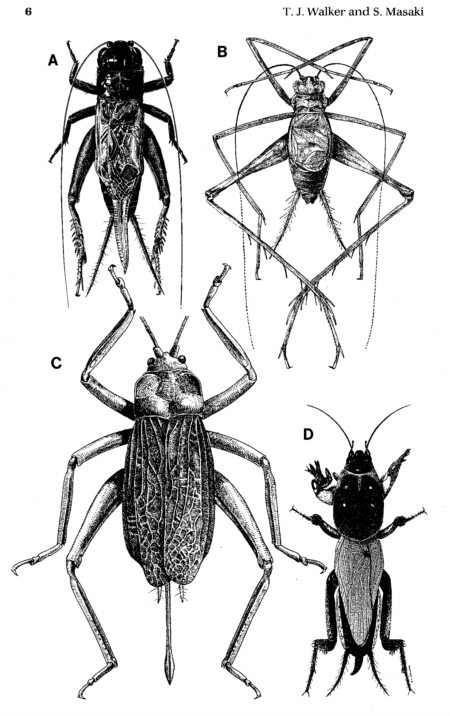
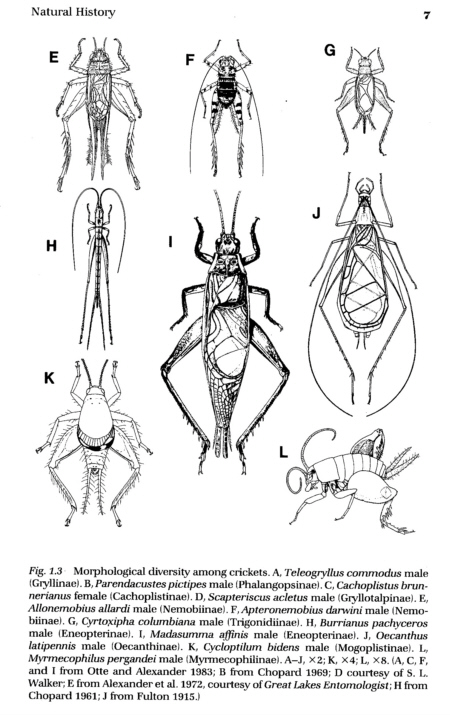

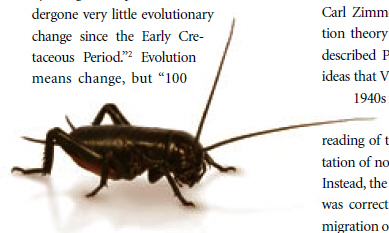
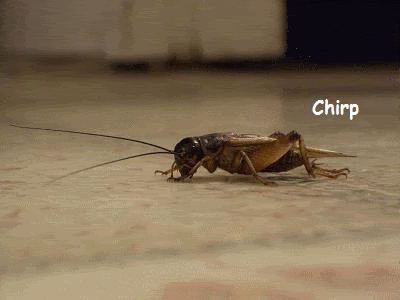
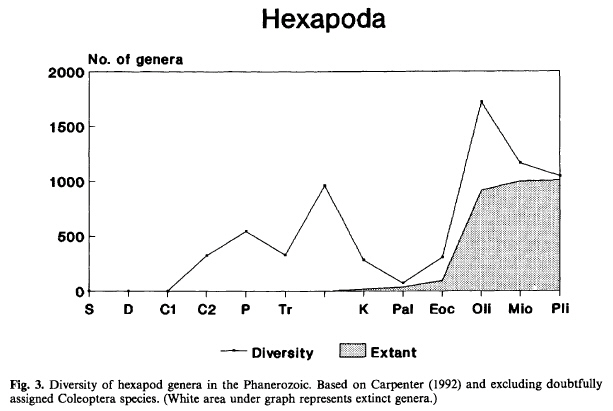
Well done. I applaud the efforts of all who choose to enlighten the lay people (like me) to the slimy tactics of the creationist attack on science.
If we could only bottle up creationist slime and sell it…
LikeLike
Thanks! And yes, we could call it “Slurm”! :)
LikeLike
Heheheh, I can’t stop chuckling at the mental image of all of Arthropoda “suddenly” popping into the fossil record. BOOM!
If you picture rains of crabs and lobsters and (of course) crickets it’s even more entertaining.
Lovely, thorough, well-cited deconstruction.
On a completely unrelated note, and this may just be me, but after a while of reading your blog your pigeon/chess piece background kind of starts doing a magic eye thing.
LikeLike
Thank you, coming from an actual bug person that means a lot.
LikeLike
I’m not a bug person, or even really a scientist, but even I know that you need to put a bit more detail than just “crickets”. And the thing with him getting the wrong picture? I feel ashamed to be part of the same species as people who can make such pathetic mistakes.
LikeLike
Wonderful post Troy and well done for pointing out this nonsense from Sherwin. I have not seen his article and was unaware that he had cited our paper on Schizodactylus groeningae in support of his creationist drivel. I wonder if he has actually read it?
LikeLike
Hi Sam! Thanks, I hope I did the subject some justice, not being a specialist in insects living or fossil. As for what Sherwin read, I wouldn’t be surprised if he never went past Diana Yates’ press release. My experience is that creationist are pretty incurious as a group.
LikeLike